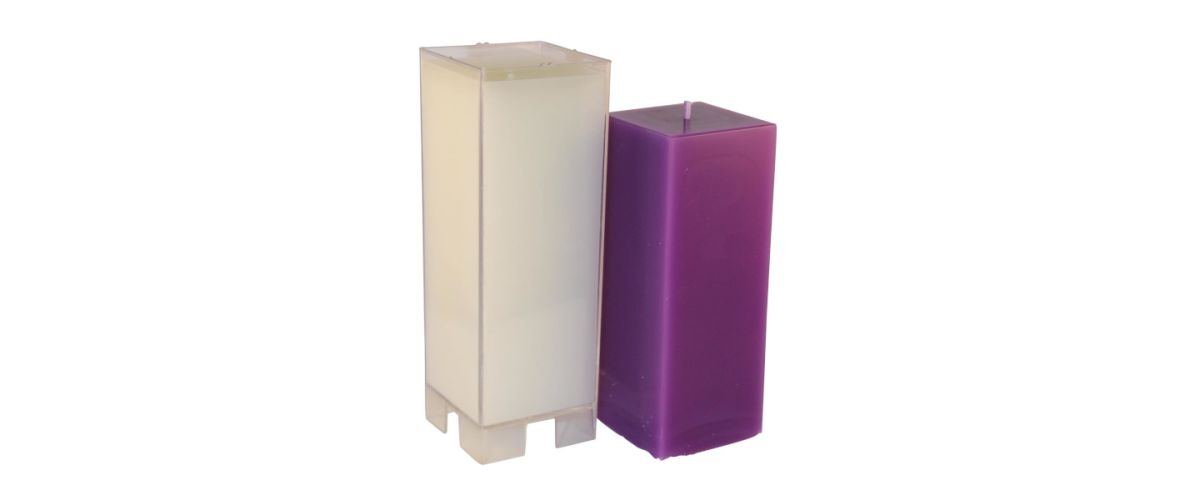login or create an account

Candle molds - Polycarbonate molds
Ah, Plastic! Both our worst friend and our best foe!
Resistant, inexpensive, vailable in hundreds of different shapes and sizes, polycarbonate (or plastic) candle molds are great for the beginning candlemaker as they will allow him to create a huge variety of candles.

One-piece molds are the most common and the available shapes include cylinders of all sizes and diameters, squares, hexagons, decagons and all sorts of -gons, the list is not exhaustive.
Spherical and other unregular shapes are obtained with two-piece molds whose parts fit together (if they weren't made of two separable parts, you would have a hard time releasing the finished candle)
The place where the two halves join, called the seam, needs to be covered with a generous amount of mold sealer before you start pouring the wax. If you don't take this precaution, you'll end up with a candle in the shape of a semi-sphere and a table top covered in paraffin.
When you unmold a candle made in a two-piece mold, you will notice a seam line at the place where the two parts of the mold are joined. To remove this line, use a kitchen knife to scrape most of the excess wax (be sure not to carve into the candle) then "polish" the candle with an old panty hose.
How to wick a polycarbonate mold?
- thread the wick through the wick hole at the bottom of the mold, up through the length of the mold and out the top. Leave a length of about 2 inches of wick at both extremities,
- on the "open" side of the mold (the top), use a wick holder to keep the wick in place, centered and tight or just tie it around a pencil,
- on the other side, the bottom of the mold, slightly pull on the wick to tighten it and cover wick and wick hole with a generous amount of mold sealer. This should keep the wick tight enough during the pouring procedure,
- your mold is now wicked and you're ready to pour your candle.
Taking care of your polycarbonate molds
When your candlemaking day is done, fill a washtub with hot water (it's just a bit too hot if you hands think so too) and a little dishwashing liquid. Soak your polycarbonate molds for a couple of minutes then wipe and dry them with kitchen paper. Never pour that hot water down the drain unless you want to clog the pipes: let it cool off completely and fish out all the floating pieces of wax before you dispose of it.
 Thanks a bunch!
Thanks a bunch!




